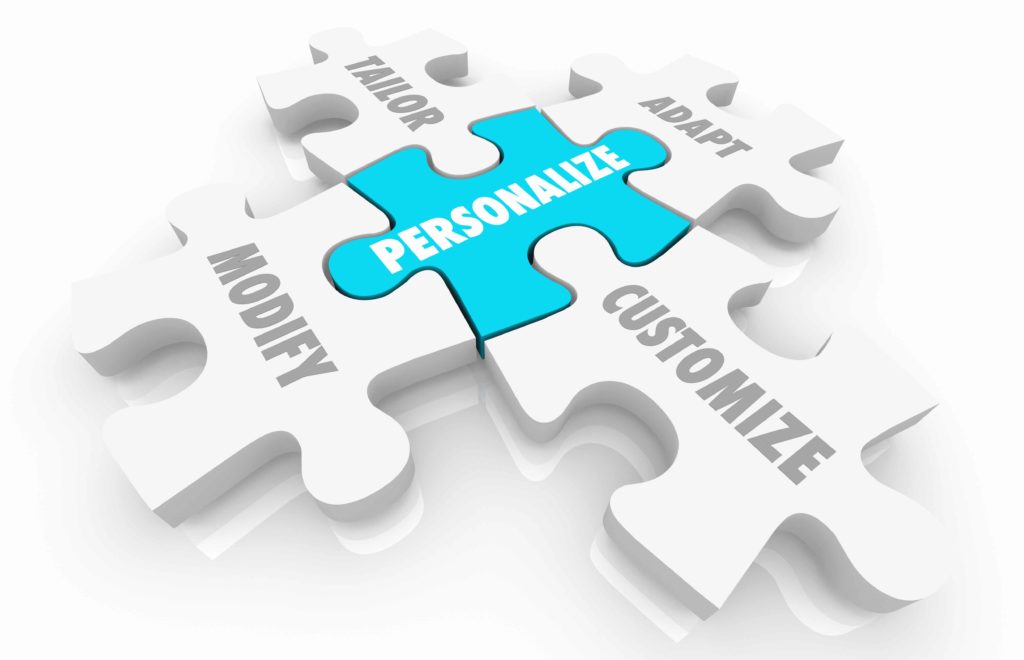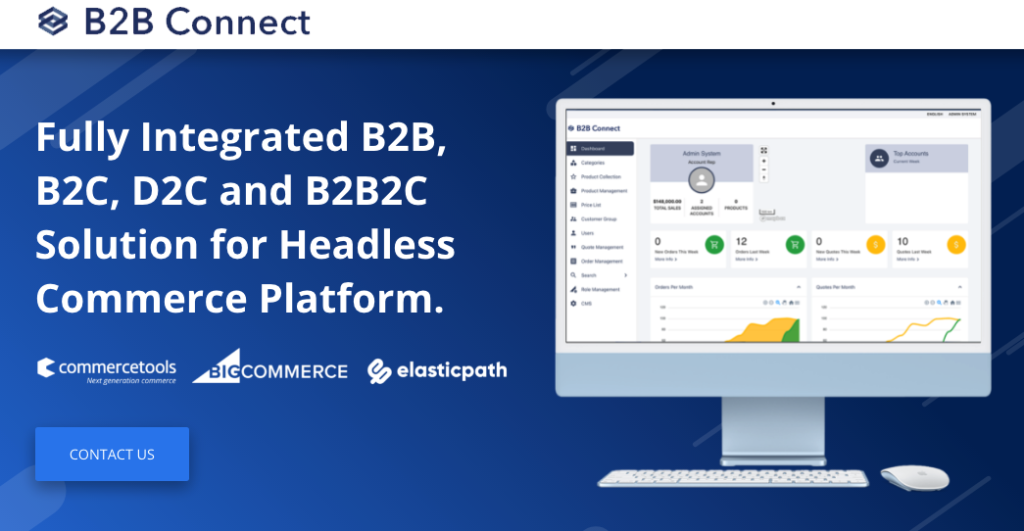In the eCommerce world, Customization vs. Personalization in the user experience (UX) is often thought to be synonymous. But, they are not. Is there a difference between them? The short answer is Yes.
This blog will discuss Customization Vs. Personalization’s main differences and how would they enhance the users’ experiences.
Both customization and personalization tailor content and features to specific characteristics of the users. So different visitors would see different things on the “same” page.
That is to say, customization and personalization share the same main goal: to create a tailored marketing experience based on a user’s specific interests. However, they both have different ways of reaching that end goal.

Customization in eCommerce
Customization is done by the users. An app/software enables users to customize or make changes to the experience and set preferences to meet their specific needs by configuring the layout, content, or functionality to reflect the users’ priorities. For example, customization allows users to choose their own selections for their interests as what to see; like selecting topics of interest and setting preferences for how to display certain information. Or changing colors or other visual design aspects of an interface.
A good example is Facebook. It allows its users to pick and choose which content they like to see best. Also, Facebook allows to turn on notifications for specific individuals, ads, pages, or posts. Thus, the user is the one who customizes his own user experience.
According to Fabric, the storefront shapes the first impression consumers have. The majority of consumers will stop browsing a storefront that is not appealing. Many of them will unlikely make a purchase. With a customizable storefront, designers and marketers can customize prebuilt components to represent their brand best. Those components include appealing homepages, category pages, and product detail pages (PDPs), all of which are crucial to delivering an exceptional customer experience.

Personalization in eCommerce
Clients can personalize their eCommerce website through the use of the eCommerce platform or by using third-party applications that will help tailor the customer experience. Developers set up the system software in a way that will help identify the customers to deliver tailored content as well as a customer experience. For example, Amazon knows a lot about its customers based on the customers’ purchase history. This allows suggesting as well as personalizing the experience to offer their customers special offers and display products that they are more likely to purchase. On a travel website, a user may experience targeted promotions and special deals based on searches or websites they have previously visited. Another example is the “Push notifications” that are used in many apps, which will present to the potential customers highly relevant information according to their interests.
Moreover, personalization allows sites to display specific information based on a customer’s geographic location, language, job function, or other personal information that may be made available. Thus, personalization not only brings value to customers but also can help increase retention.
According to Fabric, DigiCommerce partner, “MarTech Advisor found out that sales increased by 19% due to personalization. In fact, 73% of B2B buyers look for a personalized experience.” Therefore, no doubt offering tailored pricing, bulk discounts, and special promotions based on customer tiers, would not only help to create a personalized experience but also increase sales.

Customization Vs Personalization – An Enhanced User Experience for B2B
Based on the user preferences – the user will customize their own preferences. Based on the user’s typical search and purchase behavior, the software customizes (behind the scene) the user experience. Customization gives control to the user and personalization gives control to the site. Yet both can enhance the users’ experience, but only if it is implemented correctly.
In other words, to achieve this goal, business owners need to select the right solution for their headless platform that allows them to personalize and customize their B2B customers’ experiences.
A complete headless CMS solution, as B2B Connect will allow your business to provide your customers with tailored Personalized and Customized content based on geo-location, target customer groups, or even more targeted towards specific customers. Business owners can fully customize the storefront including the homepage, product detail page, and product listing page. The CMS also automates your content presentation to suit different devices.

The B2B Connect solution, developed by DigiCommerce, includes a built-in CMS that will allow your business to enhance your customers’ journey. It is equipped with advanced enterprise features that include Role-Based Control, Single Sign-on, Customizable API, Advanced File Management, Mobile Applications, Transactional components, and many others.
Customization Vs Personalization in Headless Commerce
In headless commerce, customization refers to adjusting a product or service based on a user’s preferences. While personalization refers to adjusting specific marketing messages for a consumer.
With headless commerce, the separation of the backend processing from the frontend content helps to achieve a personalized digital experience. Certainly, separating these two sides gives brands much more flexibility in how to deliver content to their customers. In addition, it allows experimenting with new ideas with different configurations for different customer tiers. You can make changes and see results faster. For instance, if a group of customers responds poorly to a particular personalized message in one marketing channel. You can quickly alter it in another marketing channel.
Moreover, headless commerce made omnichannel personalization much easier. For example, you can create content in one place and deliver it across different channels. Thus, the beauty of headless commerce allows for a personalized customer experience to reach among different marketing channels.
A business owner may attempt to customize engagement by targeting specific prospects’ customer tiers with unique web content suited to their preferences. Thus you can position your product or service in a way to attract your B2B customers. For example, offer free shipping or lifetime guarantee or easier return or exchange policies. For customers who are price conscious, you can offer certain discounts. All these tactics enable a customized purchase experience for your customers. Which will in turn enhance your customers’ user experience and retain their loyalty. This is very easy to achieve if your platform is headless.
Indeed, Customization Vs Personalization in Headless Commerce is considered two sides of one coin. You can not use one and ignore the other. You will need an eCommerce partner like DigiCommerce to guide you on your approach to optimize and enhance your customers’ user experiences.

